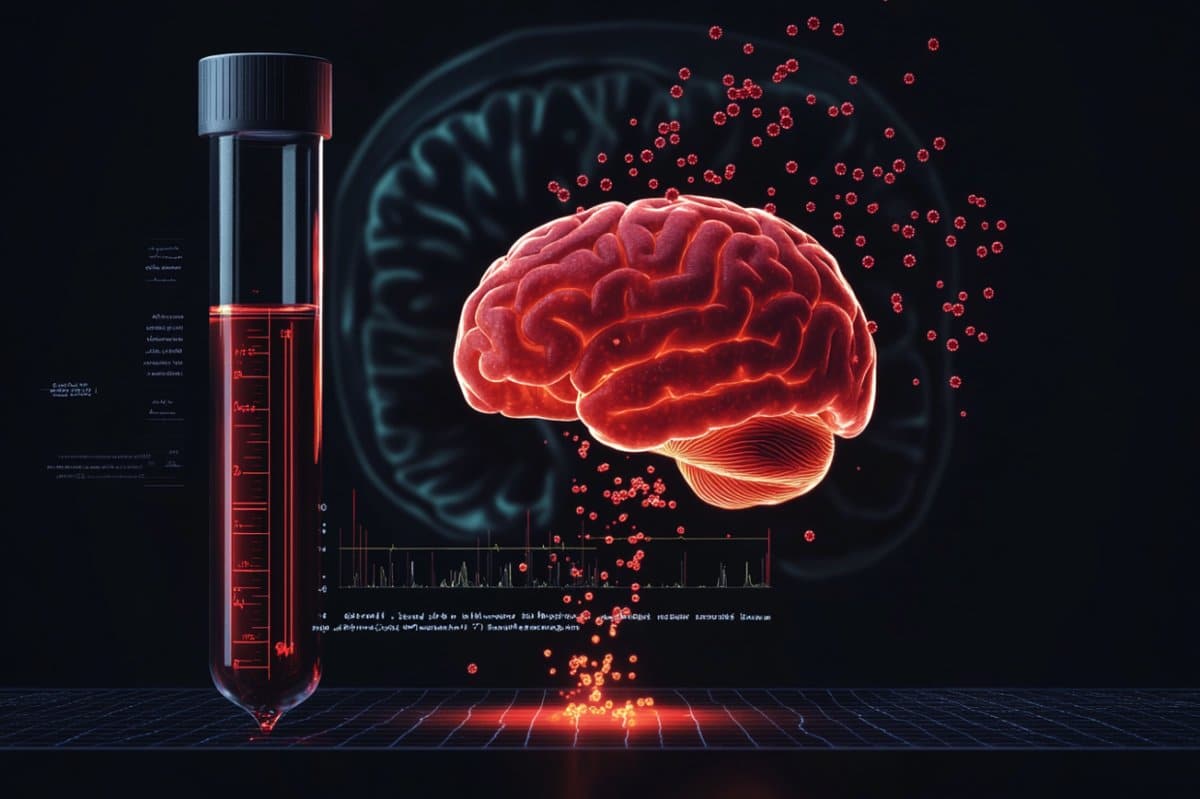Personalized Blood Test Shows Promise in Tracking aggressive Brain Tumors
ROCHESTER, Minn. (Archyde.com) — A new personalized blood test could revolutionize how doctors monitor the progression of high-grade gliomas, an aggressive form of brain cancer.Researchers at the Mayo Clinic have developed a method to detect tumor DNA in the bloodstream, perhaps offering earlier and less invasive monitoring than current methods like MRI scans and surgical biopsies.
A New Approach to Monitoring Gliomas
The study, published in *clinical Cancer Research*, focuses on identifying unique DNA junctions from each patient’s tumor. These junctions, which are more abundant and easier to detect than other DNA fragments, can be tracked in the bloodstream, providing an early warning system for disease advancement.
“This research builds on years of studying genetic rearrangements and gives us a deeper understanding of the molecular mechanisms driving gliomas,” said Dr. George Vasmatzis,co-director of the Biomarker Discovery Program at Mayo Clinic’s Center for Individualized Medicine and Mayo Clinic Thorough Cancer Center. “It offers new possibilities for patient-specific monitoring and targeted interventions.”
Overcoming the Blood-Brain Barrier
Gliomas are challenging to monitor as they release fewer DNA fragments into the blood compared to other cancers. This is largely due to the blood-brain barrier, a natural defence mechanism that prevents many substances from leaving the brain. The new test overcomes this limitation by targeting tumor-specific DNA junctions,which are present in higher quantities.
Unlike normal DNA, which follows a structured sequence, these DNA junctions form when the tumor’s genetic material breaks and rearranges. The study found that these amplified DNA junctions, due to their higher numbers, may provide a clearer picture of disease progression.
Early Detection and High Accuracy
The personalized blood test demonstrated high accuracy in detecting tumor DNA. The test detected tumor DNA in approximately 93% of cases where these DNA junctions were present.In some patients, tumor DNA levels in the blood rose before MRI scans showed any changes – offering a potential early signal for disease progression.
Current methods for monitoring gliomas, such as scans and surgical biopsies, have limitations. Scans often cannot distinguish tumor growth from treatment effects like inflammation, and biopsies are invasive procedures, making them impractical for routine monitoring. The new blood test offers a less invasive and potentially more sensitive alternative.
Clinical Implications and Future Research
The development of this personalized blood test could substantially impact the clinical management of high-grade gliomas. By providing a faster and less invasive way to track tumor progression, clinicians can potentially tailor treatments more effectively and monitor outcomes in real time.
“By tracking each tumor’s distinct molecular signature, we’re aiming to shift from a reactive approach to one that’s far more proactive,” said Dr. Terry Burns,a neurosurgeon at Mayo Clinic in rochester,Minnesota,and a study co-author. “This research could lay the groundwork for tools that help clinicians make the most informed treatment decisions as early as possible.”
however, some experts caution that further research is needed to validate these findings in larger and more diverse patient populations. Concerns remain about the potential for false positives and the need for standardized testing protocols to ensure consistent and reliable results across different laboratories.
Future studies will evaluate how well blood-based tumor tracking correlates with glioma progression across a larger group of patients. The researchers aim to refine the test and explore its potential for guiding treatment decisions and improving patient outcomes.
FAQ: Personalized Blood Test for Gliomas
| Question | Answer |
|---|---|
| What is a high-grade glioma? | A high-grade glioma is an aggressive type of brain tumor that can be difficult to treat. |
| How does this blood test work? | The test identifies unique DNA fragments (DNA junctions) specific to each patient’s tumor, allowing doctors to track the tumor’s progression through a simple blood draw. |
| Is this test widely available? | Currently, the test is not widely available and is primarily used in research settings. Further studies are needed before it can be implemented in routine clinical practice. |
| What are the benefits of this test compared to current methods? | The blood test is less invasive than surgical biopsies and may detect tumor progression earlier than MRI scans. |
| What are the limitations of the test? | The test requires personalized development for each patient based on their tumor’s unique genetic makeup. Standardized protocols and larger studies are needed to validate its accuracy and reliability. |
What are the primary advantages of this blood test over current monitoring methods like MRI scans adn biopsies?
Interview: Revolutionizing Glioma Monitoring with Personalized Blood Tests, Featuring Dr. Anya Sharma
Archyde News Editor: Welcome, Dr. Sharma, and thank you for joining us today. We’re thrilled to have you shed some light on this groundbreaking research on personalized blood tests for high-grade gliomas. Can you start by telling us a bit about your role and involvement in this field?
Dr. Anya Sharma: Thank you for having me.I am a lead oncologist at the National Cancer Institute, specializing in neuro-oncology. My primary focus is on developing and implementing innovative diagnostic and therapeutic strategies for brain tumors, and I’ve been closely following the advancements in liquid biopsies, specifically related to detecting tumor DNA in the bloodstream.
Early Detection and the Blood-Brain Barrier
Archyde News Editor: The research highlights the challenge of overcoming the blood-brain barrier. Can you elaborate on how this new blood test manages to detect tumor DNA, when earlier methods struggled?
Dr. Anya Sharma: Certainly.Gliomas often release fewer DNA fragments into the blood compared to cancers elsewhere in the body.The blood-brain barrier acts as a defense, preventing this.This new test is clever. It focuses on specific DNA junctions, unique to each patient’s tumor. These junctions are more abundant and easier to detect. so, even if the total amount of tumor DNA is low, we have these “markers,” which helps with diagnosis and assessing progression.
Advantages over Current Methods
Archyde News Editor: The article mentions that this method could be a less invasive alternative. What are the primary advantages of this blood test over current monitoring methods like MRI scans and biopsies?
Dr. anya Sharma: The advantages are significant. MRI scans can sometimes struggle to distinguish between actual tumor growth and treatment effects, such as inflammation. Surgical biopsies, while providing definitive details, are invasive and carry risks and cannot be performed as often as might be ideally needed. This blood test offers a simpler, non-invasive way to monitor the tumor regularly. And as the research shows, it could potentially detect changes earlier than MRI scans, allowing for earlier interventions.
Clinical Implications and Future Directions
Archyde News editor: The study emphasizes the potential impact on clinical management. How might this new test change how high-grade gliomas are managed in the future?
Dr. Anya Sharma: We’re looking at personalized medicine at the forefront. By tracking a tumor’s “molecular signature” through a blood test, we can potentially tailor treatments with more precision. The test could allow doctors to track the effectiveness of treatments in real-time and consider adjusting the course, as early as possible and it moves towards more informed and personalized management.
Challenges and Patient considerations
Archyde News Editor: The article also touches on some caveats,notably concerning the need for further research and standardization. What are some current challenges in implementing this test,and what advice would you offer to patients currently diagnosed with high-grade gliomas?
Dr. Anya Sharma: Validation in larger patient populations is crucial, as are standardized protocols. Some caution must be exercised against false positives to develop the most effective treatment and management. For patients, it’s always best to discuss these new tools with their oncologist. They can definitely help them to manage the risks and, if available, understand what the potential benefits of this new test might be in your case. And if they are a candidate for the treatment, it is possible to tailor your treatments to your individual genetic makeup. Patients should actively engage in informed discussions regarding treatment and monitoring plans.
Archyde News Editor: Excellent advice. Considering the potential for earlier detection and personalized treatment plans that may come about from this research, what aspect of this study excites you most, and what do you foresee as the biggest hurdle to overcome?
Dr. Anya Sharma: The most exciting prospect is, without a doubt, the potential for earlier detection. The biggest hurdle, I believe, along with the need for larger-scale trials is translating this success into widely available, affordable, and accessible tests. We need to ensure that these advances benefit all patients, regardless of their location or resources.
Archyde News Editor: Thank you, Dr. Sharma, for sharing your expert insights with our readers. It’s been a pleasure.
Dr. Anya Sharma: The pleasure was all mine.






